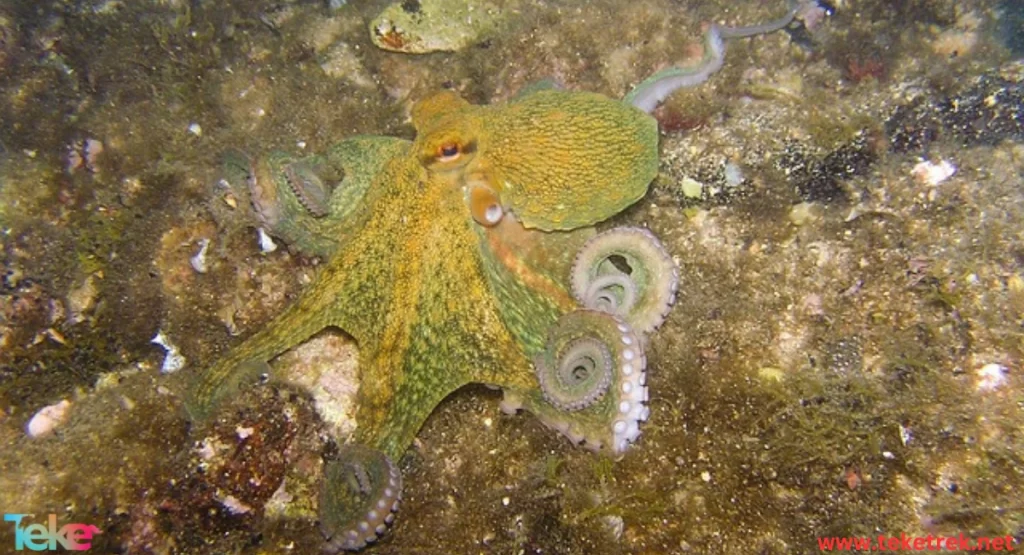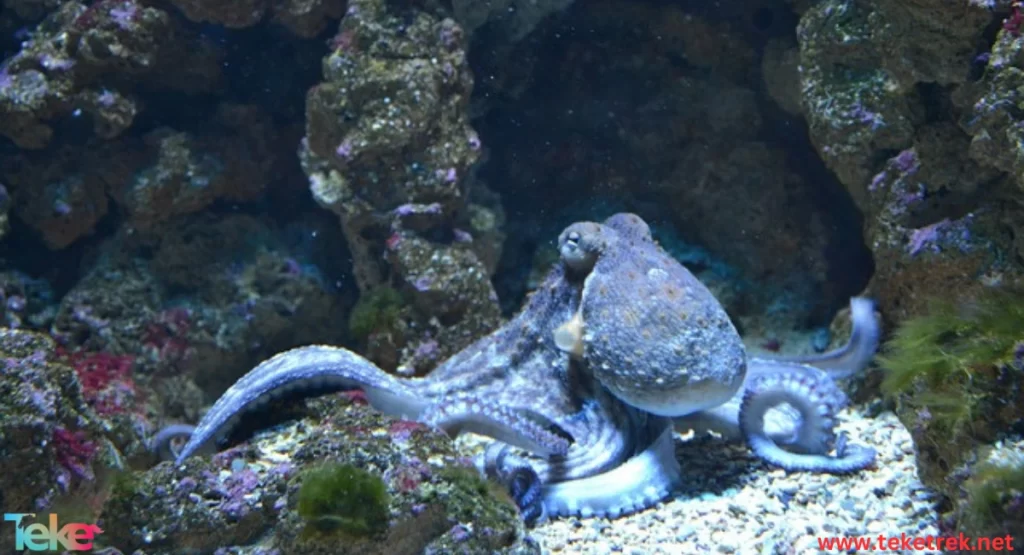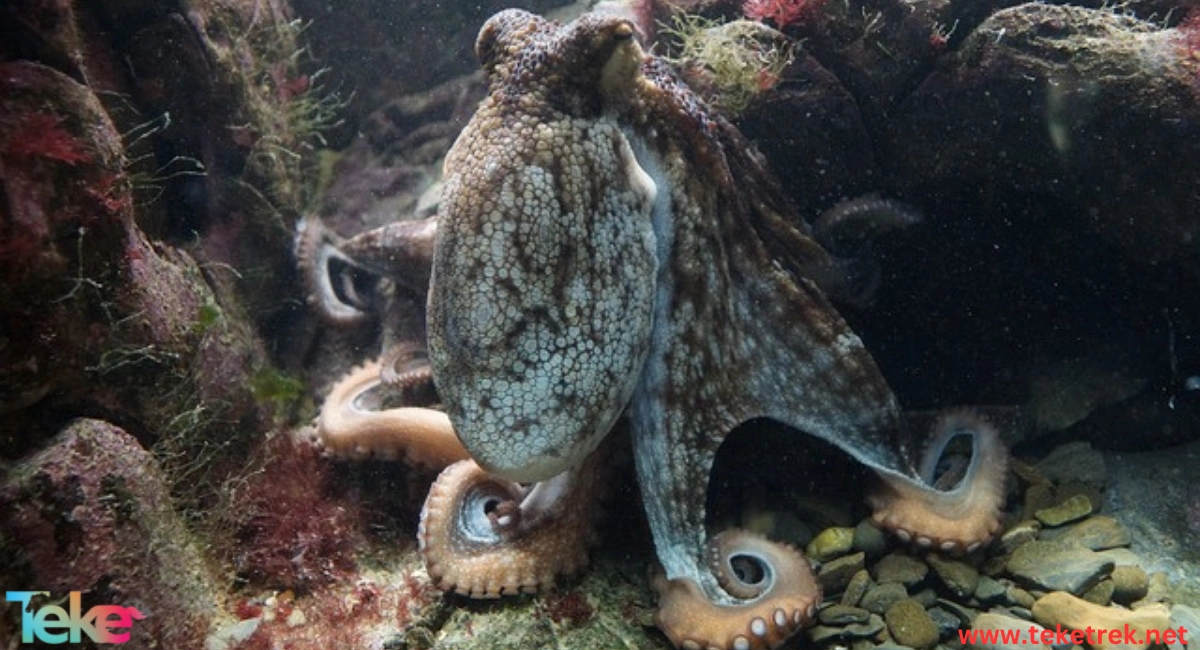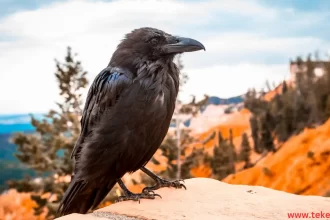The Caribbean reef octopus belongs to the Animalia kingdom, the Mollusca phylum, the Cephalopoda class, and the Octopodidae family. It is one of the distinctive octopuses that lives a solitary life, hiding in hard-to-discover places.
The Caribbean reef octopus feeds on a variety of marine animals.
Let’s learn more about it from teketrek.

Habitat of the Caribbean Reef Octopus:
The Caribbean reef octopus is found in the Caribbean Sea area of the Atlantic Ocean, in the new tropical region of the world in warm waters, and they are aquatic animals.
The range of this species extends from South Florida in North America, across the southeastern coast of the Gulf of Mexico, the Bahamas, the Caribbean Sea region, and continues south to the northern coast of South America.
It is also known that the Caribbean reef octopuses extend to the West Indies and off the coast of Curaçao.
As for their habitats, Caribbean reef octopuses primarily live in tropical areas, off the coast, in shallow waters ranging from 3-20 meters deep.
Caribbean reef octopuses mostly inhabit areas where the water temperature ranges between 20-30 degrees Celsius.
Caribbean reef octopuses are usually found in or around coral reefs, which they use for protection and dens.
The dens chosen by these octopuses are typically dark and exclude other living organisms.
Physical Characteristics of the Caribbean Reef Octopus:
Caribbean reef octopuses are typically characterized by bright green and blue colors with reddish-brown spots on their bodies.
Chromatophores, specialized cells in the skin, allow these octopuses to change their color to blend in with their background and hide themselves from predators and prey.
Caribbean reef octopuses have large, prominent eyes with a dark reddish-brown color.
The average length of their mantles, excluding the body and excluding their arms, is 54 mm, and it is known that Caribbean reef octopuses grow up to 120 mm.
This creature weighs an average of 1 kg.
Caribbean reef octopus has 7 rows of teeth.
The longest arms of the eight Caribbean reef octopus arms, the second and third, grow on average five times the length of the mantle.
Each arm consists of two rows of suckers connected by loose networks that aid in hunting.
Reproductive Stages of the Caribbean Reef Octopus:
Octopuses are monogamous, meaning one male and one female partner.
Caribbean reef octopuses do not have known mating rituals.
Since octopuses are solitary, partners are opportunistically chosen.
Caribbean reef octopuses are semelparous, meaning they reproduce only once in their lifetime before dying, and they lay eggs.
Although Caribbean reef octopuses reproduce throughout the year, the peak spawning period is from February to March.
Octopuses reach sexual maturity at the age of five months, but they may not reproduce for several years.
A female Caribbean reef octopus can lay up to 200,000 eggs, each taking about 65-80 days to hatch.
Caribbean reef octopuses hatch approximately 80 days after laying the eggs.
The size of the eggs at hatching is 15 mm, the length of their arms is 7-9 mm, and the average mantle length is 5.5 mm.
The young emerge from the egg about 15 seconds after it is first cracked.
Since both parents are usually deceased by the time the eggs hatch, the octopuses emerge from their eggs completely independent.
Caribbean reef octopuses grow at a rapid rate, meaning their weight increases by 5 percent daily.
Once Caribbean reef octopuses sexually mature at the age of five months, they will continue to grow and exhibit indeterminate growth.
By the time they die, their weight will be one-third of the amount of food they consumed throughout their lives.
Behavior of the Caribbean Reef Octopus:
Caribbean reef octopuses are solitary and nocturnal.
Caribbean reef octopuses live alone in dens along coral reefs and only interact with others for mating purposes.
It is considered territorial and defends its den and the surrounding area.
Preferred Food of Caribbean Reef Octopuses:
Caribbean reef octopuses are animal carnivorous .
Their primary prey is the Caribbean spiny lobster.
It is also known that these octopuses eat other aquatic crustaceans such as crabs and shrimp, as well as small fish and small mollusks.

Frequently Asked Questions About the Caribbean Reef Octopus:
- What are the predators of the Caribbean octopus?
Known predators of octopuses are sharks, large fish, birds, sea snakes, humans, as well as other octopuses (which feed on smaller individuals), some dolphins, and whales.
- How long does the Caribbean octopus live?
Caribbean reef octopuses live for an average of 10 to 12 months in the wild.
- What are the camouflage abilities of the Caribbean octopus?
The Caribbean reef octopus can quickly change its colors, patterns, and skin texture to match its surroundings as it moves around the coral reefs.
It uses this ability to hide from large bony fish, sharks, and other predators.
- What does the Caribbean octopus eat?
It feeds on predatory animals in the coral reefs, such as invertebrates, bivalves, large sea snails, and crabs.
Sometimes it eats human flesh-eaters and individuals of the same species.
- How does the Caribbean octopus reproduce?
It mates through internal fertilization, and females lay their eggs in cracks or caves along the surface of the coral reefs.
The female guards the nest for more than two months until the eggs hatch, after which the young octopus matures sexually in less than five months.
- Is it endangered?
This species is not commercially fished, but artisanal fishermen catch it in the Caribbean Sea area.
We must be careful to preserve its environment and not endanger it.
In conclusion
Caribbean reef octopuses are primarily caught by artisanal fishermen in the Caribbean Sea area and end up being sold for the pet trade. They are rarely sold in fish markets for people to consume.
These octopuses are also used in biomedical research, especially when linking the nervous system to behavior, due to their vertebrate-like behavior.
المصادر:





